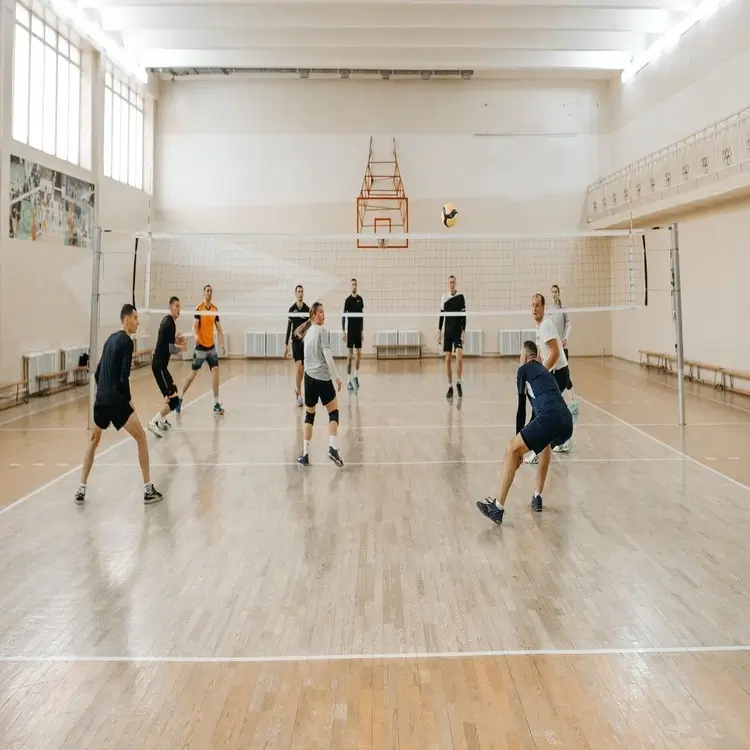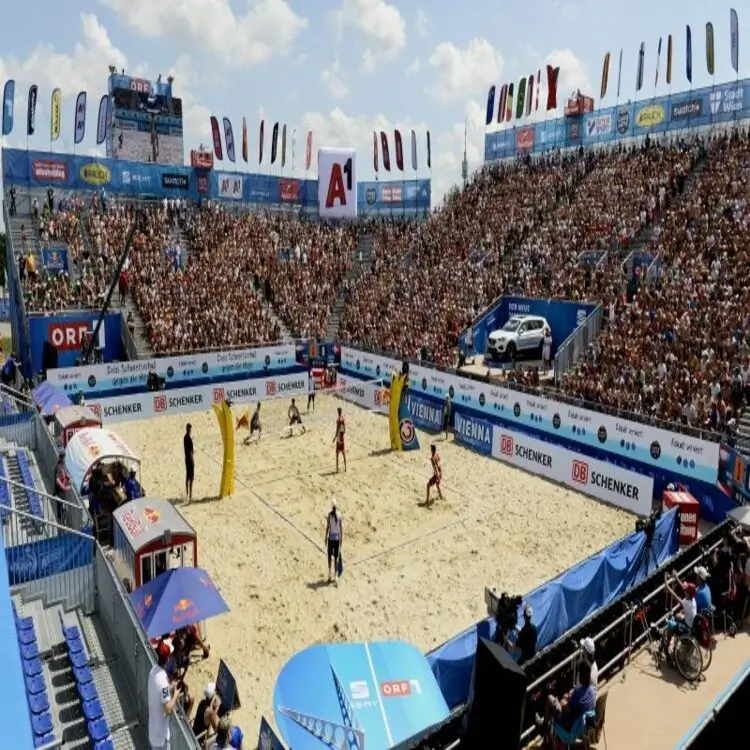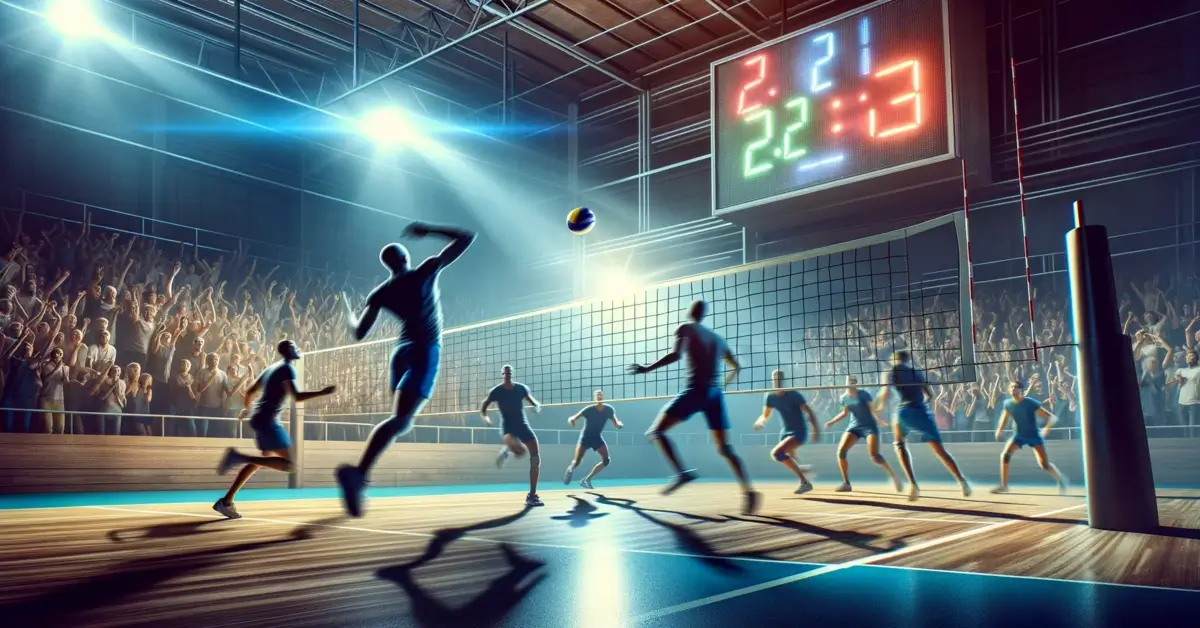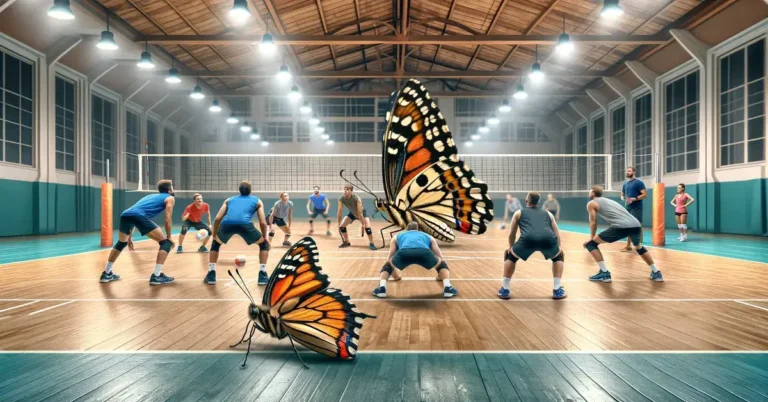The question of “how long are volleyball games” is quite common among new fans and players of the sport. Volleyball games are renowned for their dynamic nature and the duration is a reflection of their fast-paced and spirited character. The length of a volleyball game is not set in stone, as it fluctuates based on skill level, the number of sets, and specific tournament or league regulations.
Each volleyball match consists of sets where teams fight to reach a certain number of points first, often 25 in indoor volleyball. Major factors contributing to the varying lengths of games include the skill of the players, the intensity of the rallies, and pauses for timeouts or challenges. Generally, high school volleyball games tend to be on the shorter side, so I would say between 1 and 2 hours. While professional matches might extend to a couple of hours for a gripping five-set showdown.
At the core, volleyball is a sport that balances time efficiency with energetic competition, ensuring each game is packed with excitement and athleticism. Whether you’re planning to play, watch, or organize a match, understanding the typical duration can help you better appreciate the game’s tempo and structure.
Game Duration Factors – elements that affect how long are volleyball games
As we couldn’t find a proper educational video tackling how long are volleyball games, we chose this one at least for an entertaining purpose. This shows one of the most spectaculous rallies between Nebraska and Illinois and demonstrates perfectly how skills and passion can increase the duration of a volleyball game significantly.
So decoding how long are volleyball games hinges on several factors that can swing the duration remarkably. Each facet directly influences the length of the game, anchoring the timeline from the opening serve to the final point.
Level of Play
The level of play considerably alters the length of a volleyball game. At the high school tier, matches can extend to about two hours, often hinging on the developing skills of the players. Transitioning to college volleyball, the stakes and skills are higher, possibly stretching past the two-hour mark. Professional games showcase the summit of skill level, where a battle of titans can last up to two hours or more, with each rally a showcase of athleticism and strategy.
Scoring Format / Point System
Scoring format is the backbone of game duration and impacts the question of how long are volleyball games substantially. The conventional rally point system ensures that a point is scored on every serve, which can accelerate the pace of play.
Volleyball matches are typically structured in a best-of-five or a best-of-three sets configuration. The best-of-five approach is common in higher-level play like professional leagues and the Olympics. Recreational games may use a shorter best-of-three sets format. The team claiming the majority of the sets wins the match—three out of five, or two out of three.
Each set is a race to 25 points except for the decisive 5th set, which pegs the victory mark at 15 points. This scoring framework means a match lasts anywhere between one to two hours, though the exact timing is a dance with unpredictability. So, how long are volleyball games exactly? No one can tell you this upfront 😊
Time-Based Elements
Lastly, volleyball is laced with time-based elements that contribute to the overall timing. Time-outs, technical time-outs, and intermissions between sets all inject additional minutes into the gameplay. While these pauses allow teams to recalibrate, they also expand the overall length of the game, ensuring the watch ticks longer, especially in tightly contested matches where strategic time-outs can turn the tide.
Regulations and Timeouts
When we discuss how long are volleyball games, understanding both the regulations for substitutions and the rules for timeouts is key.

Substitution Rules
In volleyball, the substitution rules allow for strategic changes during the match. A player may substitute for another in a specific rotational order, which is recorded by the referee. Teams must adhere to strict limitations on the number of substitutions: for high school volleyball in the United States, teams are typically permitted a maximum of 18 substitutions per set.
Timeout Regulations
Another impact on how long are volleyball games are the certainly well-known Timeouts. They offer teams the chance to regroup and strategize. In accordance with timeout regulations, each team is generally granted two timeouts per set. During a timeout, which lasts for 30 seconds, coaches can provide players with fresh tactics or allow them to rest briefly. There’s also something called a technical timeout, which is initiated by the referees once a team reaches 8 and then 16 points; this rule applies mainly in international matches.
- Standard Team Timeouts: 2 per set, 30 seconds each.
- Technical Timeouts: Occur automatically at 8 and 16 points in a set. This is regulated through the rules of the Fédération Internationale de Volleyball (FIVB).
Match Progression and Scoring
When we explore the question of how long are volleyball games, understanding match progression and scoring is crucial to grasp how long are volleyball games. Each set within a game is a battleground of rallies, where the ultimate goal is reaching a specific point threshold before the opposing team.
Winning a Set
To win a set, a team must score 25 points and lead by at least two points. If teams end up with a 24-24 score, the set continues until one team achieves a two-point advantage. The structure of sets and points directly influences the match’s length.

Tie-Breaking Rules
In the event of a tied match, the final set acts as the tie-break, often referred to as the fifth set or a deciding set. This tie-break set differs as teams vie for 15 points instead of the usual 25, with a need to be two points ahead. Notably, how long are volleyball games can also hinge on these high-stakes rallies in the tie-break, as each serve and volley could mark the difference between triumph and defeat.
Volleyball Game Variations
In exploring how long are volleyball games, it is crucial to understand that game length varies significantly across different types of volleyball. This applies, for example, to the location, where you play volleyball.
Indoor Versus Beach Volleyball
Indoor volleyball typically consists of the best of five sets, played until one team scores 25 points, as we already know by now. Beach volleyball, conversely, is often played as the best of three sets, with the first two sets to 21 points and a potential third set to 15 points. In addition to the point differences, environmental factors such as sand resistance and outdoor conditions in beach volleyball can affect the length of the match.


FAQ
We often find ourselves curious about the specifics of volleyball matches, particularly in terms of duration. In addressing this, we’ll dive into the details regarding how long are volleyball games, explore the structure of these games, and clarify timeouts and breaks. This will ensure that whether you’re a spectator or potential player, you have a clear understanding of what to expect from the game timeline.
How many hours is a volleyball game?
A typical volleyball game at the high school level and up usually lasts between 60 to 90 minutes. This can extend up to two hours for more competitive or professional matches.
How many quarters are in a volleyball game?
Volleyball games aren’t played in quarters. Instead, they consist of sets. A match is usually a best-of-five sets format.
How many time outs are there in volleyball?
In volleyball, each team is allowed a maximum of two timeouts per set. These timeouts last for 30 seconds each.
How many minutes break in volleyball?
Between sets, there is a standard 3 minute break. However, the break before a decisive fifth set, known as the tiebreaker, is often 10 minutes long to allow for more recovery and strategy planning.
We hope you could find some valuable input about how long are volleyball games. We would be curious about your opinion: How long are your sets on average? Let us know in the comments.
If you liked this article you also might be interested in our post about Volleyball Hand Signals.







[…] significantly based on the level of play and the specific rules in place, such as those set by the International Volleyball Federation (FIVB), which state that match length fluctuates with the number of sets played and the skill levels […]